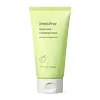What's inside
What's inside
 Key Ingredients
Key Ingredients

 Benefits
Benefits

 Concerns
Concerns

 Ingredients Side-by-side
Ingredients Side-by-side

Water
Skin ConditioningEthylhexyl Methoxycinnamate
UV AbsorberButylene Glycol
HumectantEthylhexyl Salicylate
UV AbsorberC12-15 Alkyl Benzoate
AntimicrobialAlcohol
AntimicrobialHomosalate
Skin ConditioningDiethylamino Hydroxybenzoyl Hexyl Benzoate
UV FilterOctocrylene
UV AbsorberCI 77891
Cosmetic ColorantCyclomethicone
Emollient1,2-Hexanediol
Skin ConditioningPolymethylsilsesquioxane
Viscum Album Leaf Extract
SoothingPortulaca Oleracea Extract
Skin ConditioningCentella Asiatica Extract
CleansingPolyacrylate-13
Caprylic/Capric/Succinic Triglyceride
EmollientAluminum Stearate
Cosmetic ColorantParfum
MaskingPhenoxyethanol
PreservativePolyhydroxystearic Acid
EmulsifyingBis-PEG-15 Dimethicone/Ipdi Copolymer
Glycerin
HumectantSorbitan Oleate
EmulsifyingOctyldodecanol
EmollientPolyisobutene
Behenyl Alcohol
EmollientAlumina
AbrasiveInulin Lauryl Carbamate
Emulsion StabilisingEthylhexylglycerin
Skin ConditioningSodium Stearoyl Glutamate
CleansingPolysorbate 20
EmulsifyingEchium Plantagineum Seed Oil
Skin ConditioningAloe Barbadensis Leaf Extract
EmollientSodium Hyaluronate
HumectantHelianthus Annuus Seed Oil Unsaponifiables
EmollientCardiospermum Halicacabum Flower/Leaf/Vine Extract
Skin ConditioningHelianthus Annuus Seed Oil
EmollientCamellia Japonica Leaf Extract
Skin ConditioningOpuntia Coccinellifera Fruit Extract
Skin ConditioningOrchid Extract
Skin ConditioningCitrus Unshiu Peel Extract
MaskingCamellia Sinensis Leaf Extract
AntimicrobialWater, Ethylhexyl Methoxycinnamate, Butylene Glycol, Ethylhexyl Salicylate, C12-15 Alkyl Benzoate, Alcohol, Homosalate, Diethylamino Hydroxybenzoyl Hexyl Benzoate, Octocrylene, CI 77891, Cyclomethicone, 1,2-Hexanediol, Polymethylsilsesquioxane, Viscum Album Leaf Extract, Portulaca Oleracea Extract, Centella Asiatica Extract, Polyacrylate-13, Caprylic/Capric/Succinic Triglyceride, Aluminum Stearate, Parfum, Phenoxyethanol, Polyhydroxystearic Acid, Bis-PEG-15 Dimethicone/Ipdi Copolymer, Glycerin, Sorbitan Oleate, Octyldodecanol, Polyisobutene, Behenyl Alcohol, Alumina, Inulin Lauryl Carbamate, Ethylhexylglycerin, Sodium Stearoyl Glutamate, Polysorbate 20, Echium Plantagineum Seed Oil, Aloe Barbadensis Leaf Extract, Sodium Hyaluronate, Helianthus Annuus Seed Oil Unsaponifiables, Cardiospermum Halicacabum Flower/Leaf/Vine Extract, Helianthus Annuus Seed Oil, Camellia Japonica Leaf Extract, Opuntia Coccinellifera Fruit Extract, Orchid Extract, Citrus Unshiu Peel Extract, Camellia Sinensis Leaf Extract
Water
Skin ConditioningCetyl Ethylhexanoate
EmollientOctyldodecanol
EmollientIsopropyl Palmitate
EmollientHydrogenated Poly(C6-14 Olefin)
EmollientButylene Glycol
HumectantDicaprylyl Ether
EmollientDipropylene Glycol
HumectantHydrogenated Vegetable Oil
Emollient1,2-Hexanediol
Skin ConditioningGlyceryl Stearate
EmollientCetearyl Alcohol
EmollientPolysorbate 60
EmulsifyingParfum
MaskingC14-22 Alcohols
Emulsion StabilisingCarbomer
Emulsion StabilisingTromethamine
BufferingC12-20 Alkyl Glucoside
EmulsifyingGlyceryl Caprylate
EmollientDisodium EDTA
Ethylhexylglycerin
Skin ConditioningPyrus Malus Seed Oil
EmollientCoco-Caprylate/Caprate
EmollientCaprylic/Capric Triglyceride
MaskingPyrus Malus Fruit Extract
Skin ConditioningGlucose
HumectantTocopherol
AntioxidantGlycine Soja Oil
EmollientWater, Cetyl Ethylhexanoate, Octyldodecanol, Isopropyl Palmitate, Hydrogenated Poly(C6-14 Olefin), Butylene Glycol, Dicaprylyl Ether, Dipropylene Glycol, Hydrogenated Vegetable Oil, 1,2-Hexanediol, Glyceryl Stearate, Cetearyl Alcohol, Polysorbate 60, Parfum, C14-22 Alcohols, Carbomer, Tromethamine, C12-20 Alkyl Glucoside, Glyceryl Caprylate, Disodium EDTA, Ethylhexylglycerin, Pyrus Malus Seed Oil, Coco-Caprylate/Caprate, Caprylic/Capric Triglyceride, Pyrus Malus Fruit Extract, Glucose, Tocopherol, Glycine Soja Oil
Alternatives
Ingredients Explained
These ingredients are found in both products.
Ingredients higher up in an ingredient list are typically present in a larger amount.
1,2-Hexanediol is a synthetic liquid and another multi-functional powerhouse.
It is a:
- Humectant, drawing moisture into the skin
- Emollient, helping to soften skin
- Solvent, dispersing and stabilizing formulas
- Preservative booster, enhancing the antimicrobial activity of other preservatives
Butylene Glycol (or BG) is used within cosmetic products for a few different reasons:
Overall, Butylene Glycol is a safe and well-rounded ingredient that works well with other ingredients.
Though this ingredient works well with most skin types, some people with sensitive skin may experience a reaction such as allergic rashes, closed comedones, or itchiness.
Learn more about Butylene GlycolEthylhexylglycerin (we can't pronounce this either) is commonly used as a preservative and skin softener. It is derived from glyceryl.
You might see Ethylhexylglycerin often paired with other preservatives such as phenoxyethanol. Ethylhexylglycerin has been found to increase the effectiveness of these other preservatives.
Octyldodecanol is a fatty alcohol. It is primarily used to enhance the texture of products.
As an emulsifier, Octyldodecanol helps prevent the oils and waters from separating. It also prevents ingredients from creating foam when shaken.
Octyldodecanol is created by reducing fatty acid to an alcohol.
Due to its high molecular weight, it does not get absorbed into the skin.
Learn more about OctyldodecanolParfum is a catch-all term for an ingredient or more that is used to give a scent to products.
Also called "fragrance", this ingredient can be a blend of hundreds of chemicals or plant oils. This means every product with "fragrance" or "parfum" in the ingredients list is a different mixture.
For instance, Habanolide is a proprietary trade name for a specific aroma chemical. When used as a fragrance ingredient in cosmetics, most aroma chemicals fall under the broad labeling category of “FRAGRANCE” or “PARFUM” according to EU and US regulations.
The term 'parfum' or 'fragrance' is not regulated in many countries. In many cases, it is up to the brand to define this term.
For instance, many brands choose to label themselves as "fragrance-free" because they are not using synthetic fragrances. However, their products may still contain ingredients such as essential oils that are considered a fragrance by INCI standards.
One example is Calendula flower extract. Calendula is an essential oil that still imparts a scent or 'fragrance'.
Depending on the blend, the ingredients in the mixture can cause allergies and sensitivities on the skin. Some ingredients that are known EU allergens include linalool and citronellol.
Parfum can also be used to mask or cover an unpleasant scent.
The bottom line is: not all fragrances/parfum/ingredients are created equally. If you are worried about fragrances, we recommend taking a closer look at an ingredient. And of course, we always recommend speaking with a professional.
Learn more about ParfumWater. It's the most common cosmetic ingredient of all. You'll usually see it at the top of ingredient lists, meaning that it makes up the largest part of the product.
So why is it so popular? Water most often acts as a solvent - this means that it helps dissolve other ingredients into the formulation.
You'll also recognize water as that liquid we all need to stay alive. If you see this, drink a glass of water. Stay hydrated!
Learn more about Water